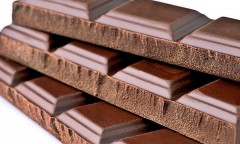By Arthur Dominic J. Villasanta , | May 29, 2017

BEAM
The Bigelow Expandable Activity Module (BEAM) attached to the International Space Station (ISS) has passed its first big test as a habitat for astronauts by proving it can withstand meteorite strikes and assorted space debris
Its next big test will see if it can protect ISS astronauts against the deadly forms of radiation prevalent in outer space.
Like Us on Facebook
BEAM was installed on the ISS over a year ago. Initial tests on the expandable habitat suggest it might play an important role in NASA manned space exploration plans, which first calls for establishing a space station in near Moon orbit before proceeding to Mars.
During its first year in space, BEAM proved its ability to withstand space debris and micrometeorite strikes. The module's multiple layers of kevlar-like weave prevented any penetration by debris or micrometeorites, according to NASA.
Officials of Bigelow Aerospace, makers of BEAM, said their inflatable habitats should be better than the protection against radiation offered by the ISS' hull made from a combination of titanium Kevlar and high-grade steel.
Hotel magnate Robert Bigelow, founder of Bigelow Aerospace, has always admitted he went into the business of building expandable space habitats such as BEAM so he could build space hotels for space tourists. And be the one to launch space tourism, the future of tourism.
The success of BEAM's inflation aboard the International Space Station on the second try in May 2016 takes Bigelow one step closer to his ultimate aim: building the world's first space hotel.
That space hotel goes by the ungainly name of the "Bigelow Next-Generation Commercial Space Station" and it should be good to go by 2020, luck and a manned spacecraft permitting.
That's the year two of Bigelow Aerospace's B330 inflatable space habitats that look like winged marshmallows will be ready for launch into low Earth orbit.
Bigelow's first space station -- and the first to be built since the International Space Station -- will consist of two B330 expandable space habitats connected to each other. The space station will have crew capsules; solar arrays for power; propulsion and a docking node.
-
Use of Coronavirus Pandemic Drones Raises Privacy Concerns: Drones Spread Fear, Local Officials Say

-
Coronavirus Hampers The Delivery Of Lockheed Martin F-35 Stealth Fighters For 2020

-
Instagram Speeds Up Plans to Add Account Memorialization Feature Due to COVID-19 Deaths

-
NASA: Perseverance Plans to Bring 'Mars Rock' to Earth in 2031

-
600 Dead And 3,000 In The Hospital as Iranians Believed Drinking High-Concentrations of Alcohol Can Cure The Coronavirus

-
600 Dead And 3,000 In The Hospital as Iranians Believed Drinking High-Concentrations of Alcohol Can Cure The Coronavirus

-
COVID-19: Doctors, Nurses Use Virtual Reality to Learn New Skills in Treating Coronavirus Patients









